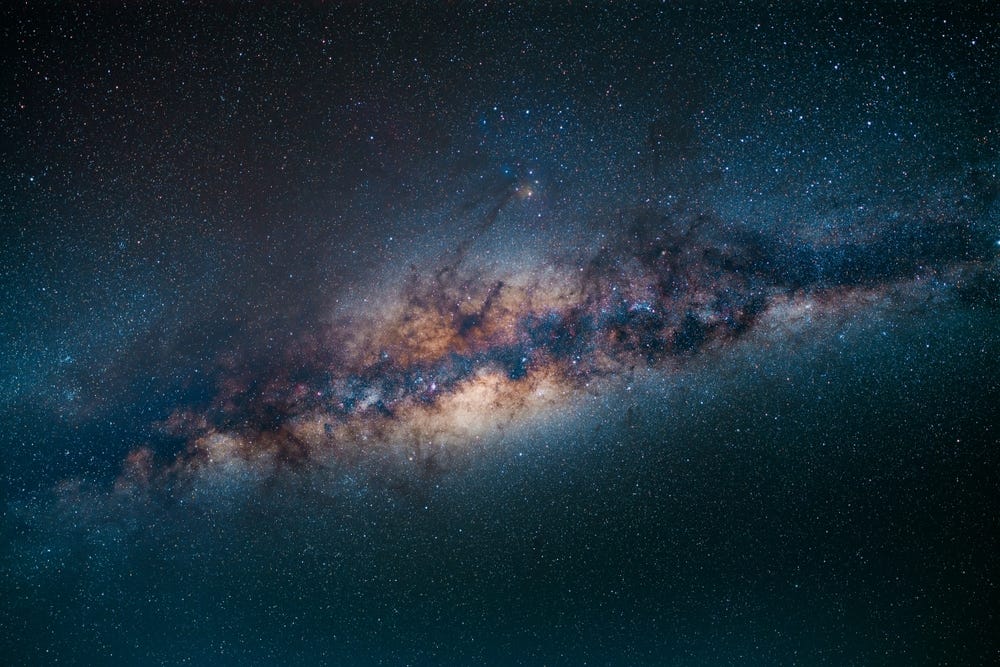Biden Just Gave NASA the Green Light for a Cool New Moon Base
President Joe Biden is going all in on infrastructure in space. That is to say, space stations.

[June 21, 2021: David Axe]
President Joe Biden’s plan to spend a couple trillion dollars on infrastructure here on Earth is still working its way through a fractious Congress. In the meantime the Biden administration is going all in on infrastructure in space.
That is to say, space stations.
The Biden administration is working to extend the service life of the International Space Station. At the same time, the administration is clarifying plans for a new station that would orbit the moon.
The twin initiatives couldn’t have come at a better time for proponents of a slowly emerging orbital economy.
On Wednesday, the Chinese space agency launched the first long-term crew to China’s own new space station. If the United States were to falter in its efforts to keep people in space year-round, authoritarian China would be more than happy to become humanity’s main off-world host, experts said. That’s a chilling proposition for advocates of a free and democratic orbital community.
The International Space Station isn’t the world’s first space station. But the low-orbit habitat, circling Earth at an altitude of 250 miles, is the first enduring one. NASA’s three-person Skylab launched in 1973 and burned up in the atmosphere, as planned, in 1979. The Soviet Mir, also big enough to house three crew, lasted from 1986 to ’96.
A NASA-led international alliance, with Russia as a key member, started assembling the ISS back in 1998. More than 200 spacewalks later, the 310-foot, solar-powered station includes living quarters, science labs, engineering facilities, an observatory and attachments for several visiting spacecraft.
The ISS usually has six or seven people aboard. Two are Russian. In addition to several Americans, the crew usually includes a specialist or two from the European, Japanese or Canadian space agencies.
For more than 20 years, the ISS has supported humanity’s only long-term, off-world population. It’s a multi-billion-dollar anchor for what space boosters hope will eventually expand into a substantial, and self-sustaining orbital economy.
The station is also the main venue for the United States and Russia to cooperate in a high-profile way on, well, anything. Back on Earth, Russia hacks American infrastructure, interferes with American elections and threatens American allies. Relations are fraught. Longstanding U.S.-Russian treaties are collapsing at a record pace.
But in space, Americans and Russians don’t just get along. They rely on each other for mutual survival. While U.S. astronauts traditionally lead ISS crews, the Russian cosmonauts handle the station’s upkeep. They fix the wiring and plumbing. They dispose of the trash.
More significantly, Russian Soyuz space capsules were, for a critical nine-year period, the only vehicles capable of transporting crew to and from the station. NASA’s Space Shuttles helped to handle that mission until they were decommissioned in 2011. The U.S. space agency finally resumed its own crew-transport missions late last year using SpaceX’s new Crew Dragon capsule.
Dismantling the ISS before the United States and its allies have prepared alternative orbital habitats could be a serious blow to American leadership in space.
As the space agency originally envisioned it, the Lunar Gateway station would function as a sort of pit stop for astronauts bound for the moon. Instead of flying directly to the moon the way the Apollo astronauts did back in the late 1960s and early ’70s (the first and last time anyone stepped foot on the moon), they would travel from Earth to the Lunar Gateway station. The station would then adjust its orbit and deposit explorers onto the lunar surface aboard back-and-forth landers.
The problem was, there was no way the Lunar Gateway was going to be ready in time for a new moon landing. That left the lunar station in a kind of planning limbo.
Biden just yanked the Lunar Gateway out of this bureaucratic purgatory. New NASA administrator Bill Nelson endorsed the return to the moon but hedged on the deadline. “I think we have to put a dose of sobering reality into our analysis,” Nelson told the Associated Press last month.
Delaying the next moon landing by even a few months should allow NASA to return to the original plan of stopping over at the Lunar Gateway. “The Lunar Gateway is now a key part of NASA strategy,” said Chris Impey, a professor of astronomy at the University of Arizona.
Not coincidentally, the bipartisan U.S. Innovation and Competition Act—Biden’s $250-billion science bill, which passed the Senate in early June and now awaits a vote in the House of Representatives—includes a NASA authorization provision that sets aside $10 billion for the Lunar Gateway’s landers.
In a separate interview with The Verge, Nelson also threw the ISS a lifeline. “I want to expand the life of the station to 2030,” he said, “and the idea would eventually be that you let private industry build the space station thereafter.”
As part of that extension, NASA has begun negotiating with the Russian space agency to continue its own role on the ISS. NASA did not respond to a request for comment.
Pavel Luzin, an independent space expert, told The Daily Beast Moscow is likely to sign on through the station’s eventual handover to private industry. “The most significant fact here is that the successful space program in cooperation with the West gives the Russian political system a domestic legitimacy as a great power status in international relations,” Luzin said.
If the goal is to get more people living and working in space, and paying their own way, timing is critical—and five years could make a huge difference. There was no way private industry was going to be ready to take over the ISS in 2025, experts said. But considering the pace at which the commercial space industry is expanding, it just might be ready by 2030.
Tourism companies could lead the way. “We’ve seen significant interest in orbital private spaceflight in the past couple of years,” Laura Forczyk, owner of Atlanta space consulting firm Astralytical, told The Daily Beast.
NASA has invited private firms to bid on two opportunities to bring paying customers to the ISS between late 2022 and late 2023. Each trip would involve four visitors and last two weeks—and could cost up to $200 million apiece.
So far, the only company to express firm interest in the ISS visits is Houston-based Axiom Space. Besides shepherding rich tourists to the ISS, Axiom is also developing its own habitat module—a kind of orbital spare room—that it hopes to eventually plug onto the ISS.
Handing over the ISS to viable private operators could be a boon to NASA, its partner space agencies and humanity in general. Companies could convert the ISS into a gravity-free orbital factory for producing highly specialized products—perfect crystals, for example—that could benefit NASA’s other projects.
But taxpayers would be off the hook. And NASA could spend the tens of billions of dollars it saves building up the Lunar Gateway before eventually handing it off to private industry, as well.
Think of NASA as a developer of space real estate. Like any developer in a free market, the agency has competition. China began working on its three-person Tiangong station—which in scale and design is more like Skylab and Mir than it is the ISS—way back in 2000.
After extension preparation, the Chinese station is finally ready to support people. Tiangong’s first long-term crew blasted off on Wednesday night and, a few hours later, arrived safely at the station in low Earth orbit.
U.S. law specifically bars China from participating in ISS. But it’s not clear Beijing would even want to be part of that international effort. The ISS is a strictly scientific—and, increasingly, commercial—platform.
By contrast, it’s possible Tiangong has a military mission, perhaps surveilling Earth’s surface or keeping tabs on U.S. and allied satellites. No one outside of the Chinese Communist Party knows for sure, because unlike the ISS, the Tiangong project is top secret and, for outsiders, unauditable.
It’s not hard to imagine that Chinese leaders hoped NASA’s own space station efforts would fail. If Trump had won re-election and turned off the lights on the ISS by the end of his second term while also sidelining the Lunar Gateway, there’s a scenario where, by the mid-2020s, humanity’s only available off-world real-estate would have been Chinese.
“The Chinese are very conservative regarding keeping things ‘Chinese only’ in space until they feel confident about success, but they certainly realize the prestige—and hence strategic value—and publicity accorded with issuing invitations to non-Chinese at some point,” Joan Johnson-Freese, a space expert at the U.S. Naval War College in Rhode Island, told The Daily Beast. “This will be especially true when the West doesn’t have invitations to the ISS to offer.”
In that scenario, Beijing would have been in a strong position to dictate the terms as humanity, and the world economy, slowly expanded off Earth’s surface. With strong support for not one but two space stations, Biden has forestalled that takeover.
Like these kind of feel good stories? Get the Brighter Side of News' newsletter.
Tags: #New_Innovation, #Space, #Moon, #The_Brighter_Side_of_News



